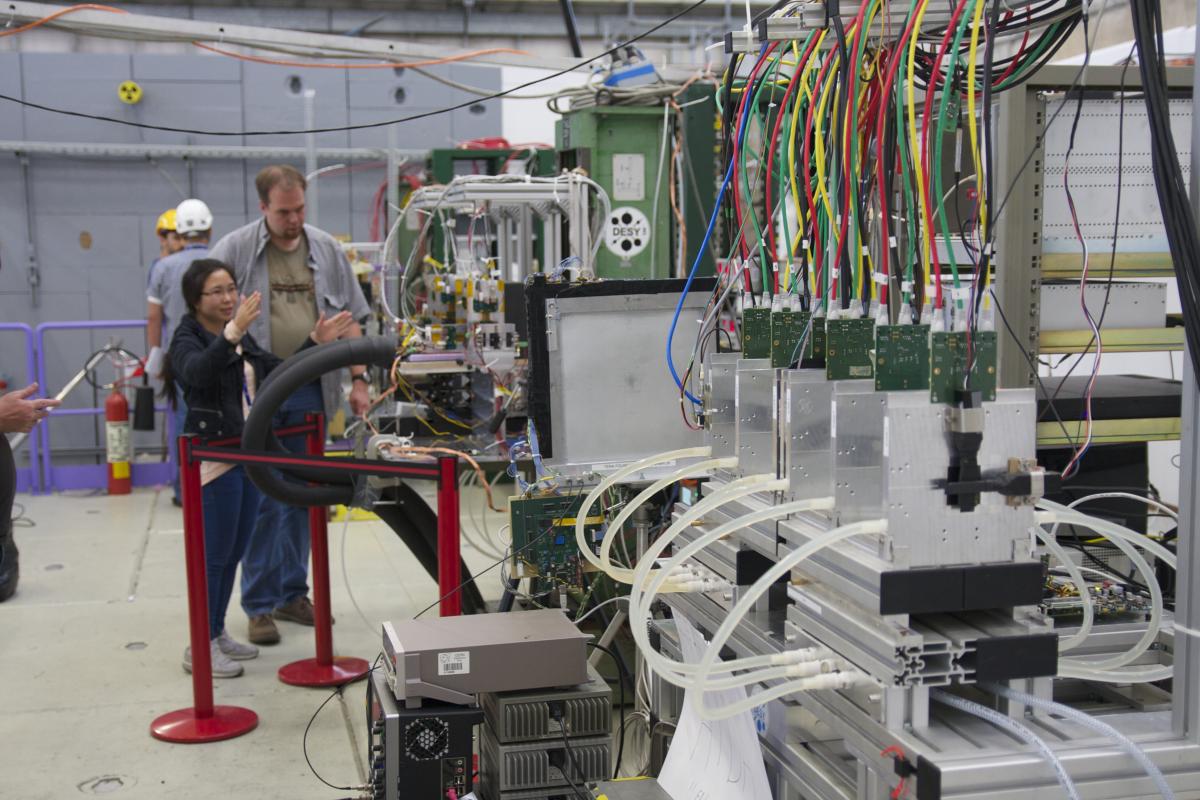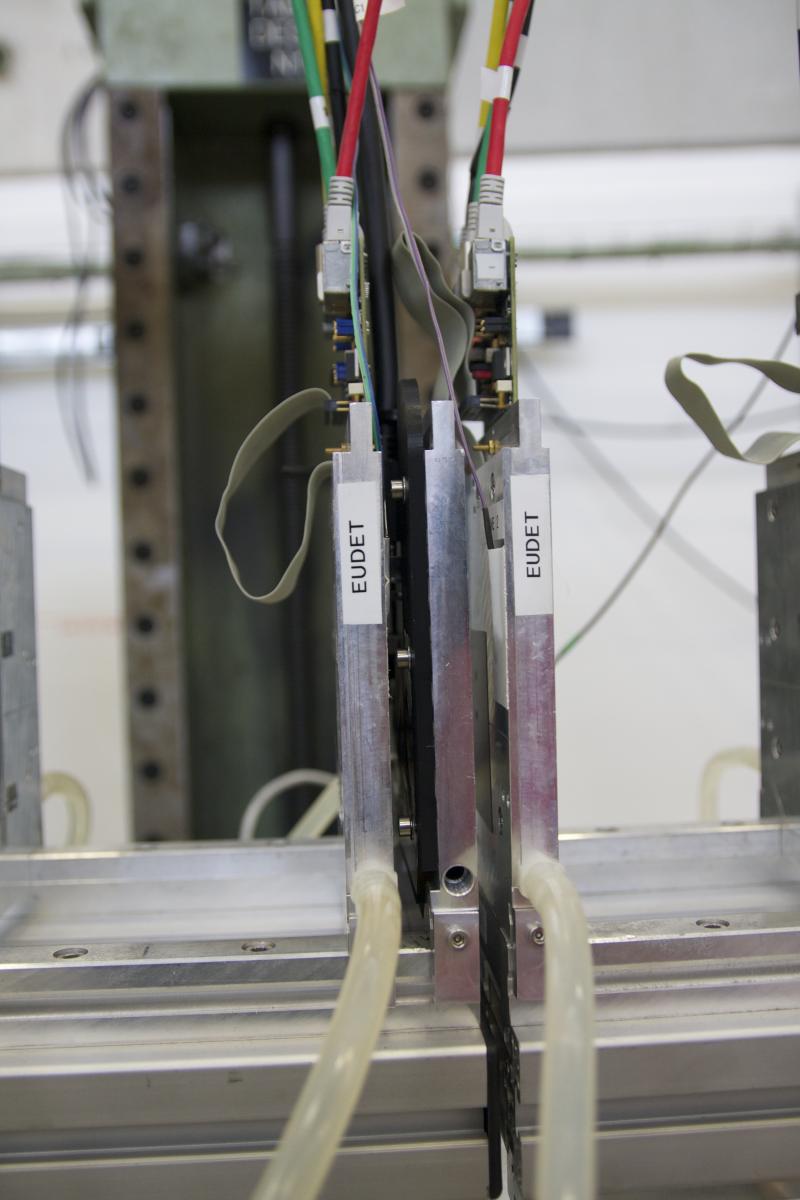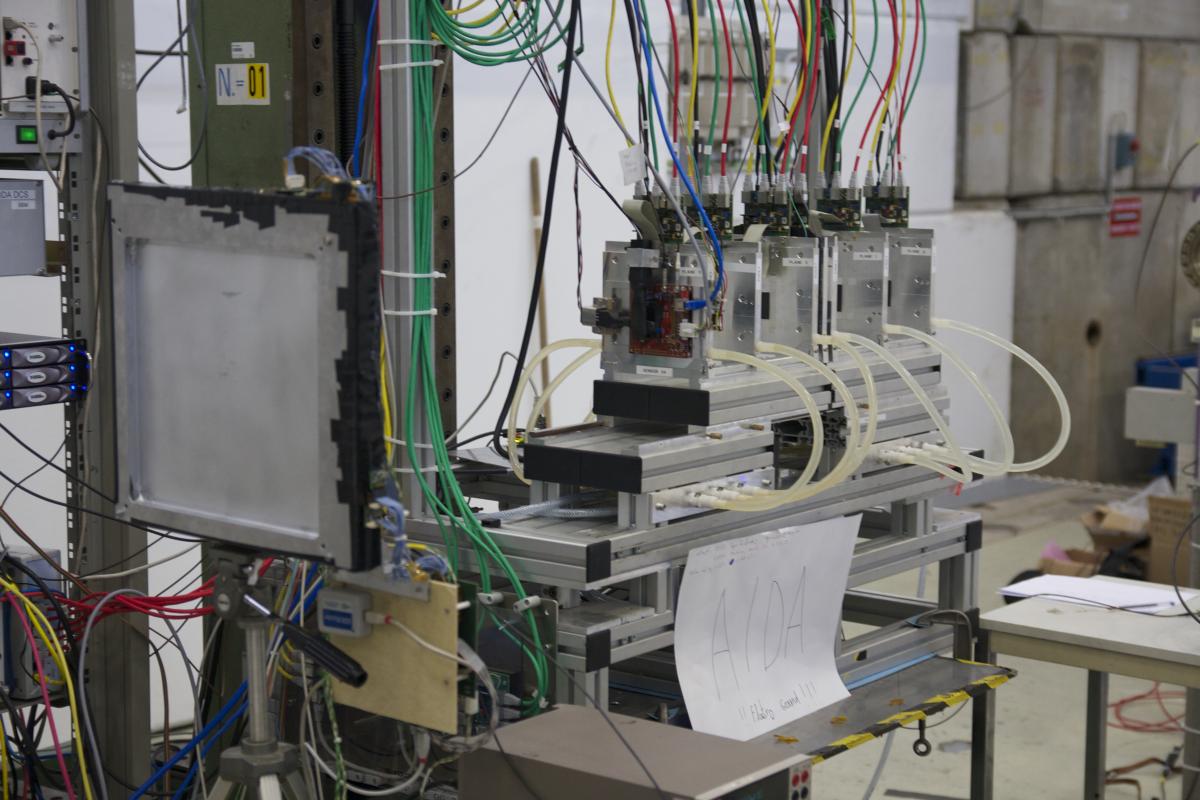Commissioning tests of the AIDA telescope
The high-resolution pixel telescope, initially developed in the EU FP6 EUDET project, has gained global recognition. In 2014, the last year of the EU FP7 AIDA project, we continue implementing improvements aiming to make the facility more useful for the detectors that are developed for the upgraded LHC experiments.

The AIDA high-resolution pixel telescope in the PS T9 experimental area.
The EUDET telescope uses ultra-thin (50 micron) CMOS pixel sensors (Mimosa26) to achieve the best possible tracking precision for new detector tests. The flexible triggering system built around the Trigger Logic Unit (TLU) and the versatile DAQ framework (EUDAQ) allow the quick integration of many detectors that are currently tested.
The powerful offline reconstruction libraries provided within the ILCSoft framework, include the simulation, test beam data track reconstruction and data analysis tools. It is the first test beam telescope developed for a detector R&D community rather than for a single experiment, which is the usual case.
The first years of the detector R&D groups experience with the EUDET telescope have clearly indicated the directions to move in order to improve and extend its functionality, which comes together this year as the AIDA telescope.

The essential parts of the telescope upgrade are the mini-TLU and EUDAQ2 projects, the successors to the TLU and EUDAQ of the present telescope, which are being tested now in the PS T9 beam line for the first time. The TLU trigger distribution scheme has changed dramatically to send out both the trigger signal and the system clock, which is shared by the DAQ systems. In this trigger distribution scheme any DAQ system using the telescope gets greater flexibility in accepting triggers without hindering the TLU from issuing triggers to the other DAQ systems.
The DAQ systems synchronization moves from a handshake-type to one based on trigger-clock counting, and offers tremendous gain in the beam acceptance efficiency. The new TLU, together with EUDAQ2 can cope with different triggering and synchronization schemes, including systems with no common clock, continuously integrating detectors, triggered detectors and self-triggering detectors. It will also allow data from detectors with different triggering systems to be combined. In EUDAQ2, the change from a central data collector and event building to a decentralized system with independent data storage makes the system much more scalable and well prepared for the upcoming HL-LHC test beam challenges with large detector prototypes and very high track rate tests.

Another view of the AIDA telescope; the commisioning of the telescope will continue at the SPS test beam area.
The commissioning of the AIDA telescope will continue in autumn 2014 at the SPS test beam area H6B, where the test beam telescope will be fitted with the large area acceptance Mimosa planes, with 4x4 cm2 active area and keeping the same 4 μm intrinsic resolution. The AIDA telescope FEI4 arm will provide flexible Region Of Interest triggering and track time-stamping capabilities. Finally, the AIDA telescope test beam infrastructure will include a compact and easy-to-use CO2 cooling plant, the last version from the TRACI family, similar to those presently used at the LHC experimental halls.
Acknowlegdment: The research leading to these results has received funding from the European Commission under the FP7 Research Infrastructures project AIDA, grant agreement no. 262025. The information herein only reflects the views of its authors and not those of the European Commission and no warranty expressed or implied is made with regard to such information or its use.
